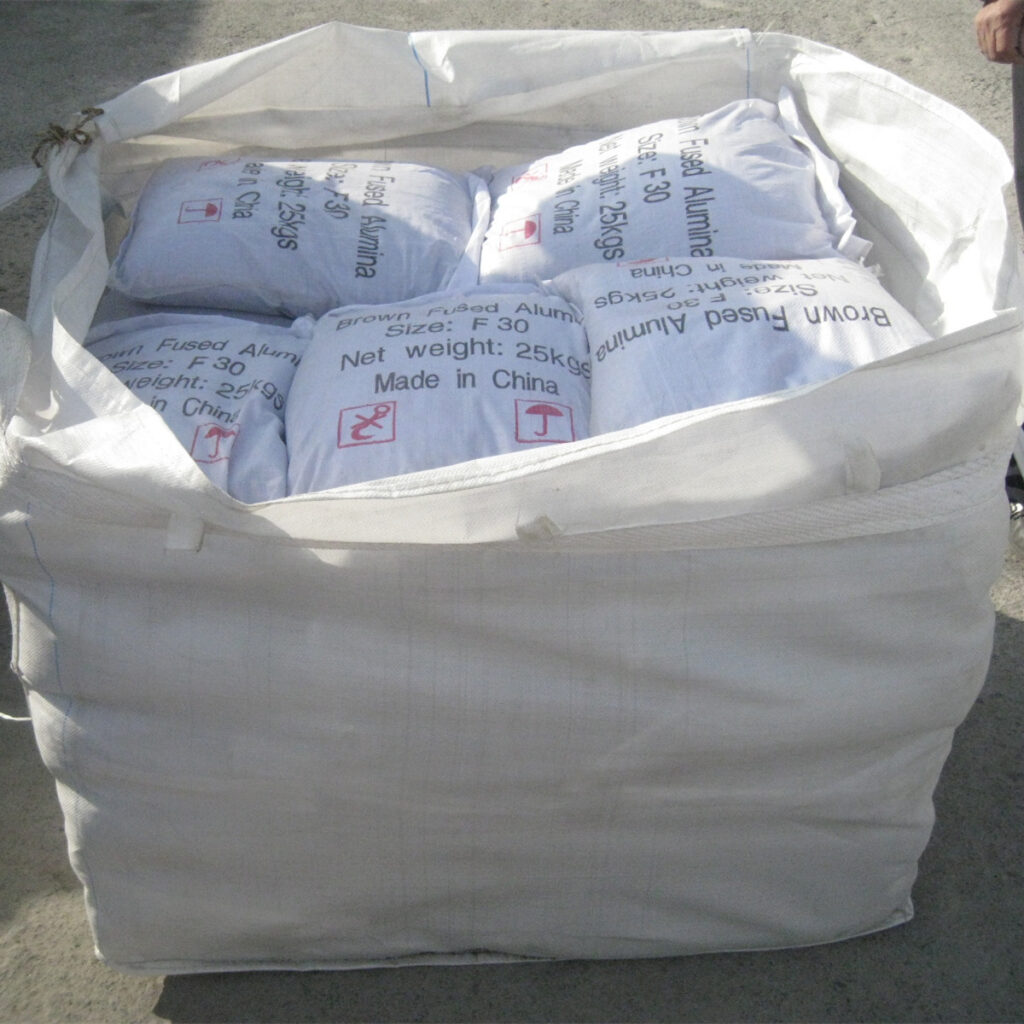What is Brown Fused Alumina?
Brown Fused Alumina is an artificial abrasive and refractory grain produced in an electric arc furnace at temperatures over 2000°C. The primary raw material is bauxite (an aluminum ore), which is fused with small amounts of coke and iron scraps. This process creates a very hard, dense, and chemically stable crystalline material composed primarily of alpha-alumina (Al₂O₃), typically in the range of 94% to 97%, with the remainder being primarily titanium oxides and silica, which form a strong interlocking crystal structure.
| BROWN FUSED ALUMINA SPLIT SIZE | AL2O3 MIN | SIO2 MAX | TIO2 MAX | Fe2O3 MAX |
| 0-50mm | 94.50% | 0.80% | 2.23% | 0.35% |
| 0-1mm | 95.50% | 0.70% | 2.23% | 0.25% |
| 1-3mm | 95.75% | 0.66% | 2.18% | 0.23% |
| 3-5mm | 95.90% | 0.60% | 2.15% | 0.21% |
| 5-8mm | 96.00% | 0.50% | 2.10% | 0.18% |
Key Properties Making it an Excellent Refractory Material
BFA’s effectiveness stems from a powerful combination of physical and chemical properties:
High Purity and Chemical Inertness: Its high Al₂O₃ content makes it highly resistant to attack by acids, slags, and molten metals. It is stable in both oxidizing and reducing atmospheres.
Exceptional Hardness (Mohs 9): Second only to diamonds and silicon carbide, this hardness translates into superior abrasion and erosion resistance. This is critical in applications where refractory linings are subjected to mechanical wear from solid charges, gas flows, or stirring.
High Melting Point (~2050°C): It remains solid and structurally sound at the extreme temperatures found in industrial furnaces.
High Mechanical Strength: BFA grains have high cold crushing strength and maintain their strength at elevated temperatures, providing structural integrity to the refractory lining.
Excellent Volume Stability & Low Thermal Expansion: It has a relatively low coefficient of thermal expansion, meaning it expands and contracts less with temperature changes. This reduces thermal stress and the risk of spalling (cracking and peeling).
Good Thermal Conductivity: This property allows for efficient heat transfer through the lining, which is beneficial in certain furnace designs like coke ovens or for heat exchangers.
Controlled Grain Morphology: BFA can be crushed and screened to specific grain size distributions. Its blocky, equi-axed (rather than elongated or splintery) grain shape allows for high packing density, which is crucial for creating strong, dense refractory shapes with low porosity.
How is it Used in Refractories?
BFA is rarely used alone as a monolithic brick. Instead, it serves as the critical aggregate component within various refractory formulations:
As an Aggregate: It forms the skeletal, load-bearing structure of the refractory product. The grains are bonded together with finer powders and a matrix phase.
In Refractory Bricks/Shapes: It is the main ingredient in high-alumina bricks and shapes used in extremely demanding positions within a furnace (e.g., slag lines, tap holes, burner blocks).
In Monolithic Refractories: It is a key aggregate in castables, ramming mixes, and gunning mixes that are poured or pneumatically applied to form linings.
As a Filler: Fine grades of BFA are used to fill voids between larger aggregates, improving density and strength.
Common Refractory Applications
BFA-based refractories are found in the hottest and most aggressive environments of heavy industry:
Steel Industry:
Ladle Linings: Especially in the slag line, where resistance to corrosive steel slag is paramount.
Tundish Linings: For continuous casting.
Tap Blocks & Runner Systems: For channeling molten steel.
Blast Furnace Linings: In certain areas.
Cement & Lime Kilns: As wear-resistant linings in the burning zone and other high-wear areas.
Non-Ferrous Metal Processing: In furnaces for copper, zinc, and aluminum due to resistance to molten metal penetration.
Incinerators & Waste-to-Energy Plants: Where resistance to corrosive flue gases and alkaline slags is required.
Glass Melting Furnaces: Used in regenerator checkers and other areas not in direct contact with the glass melt.
Petrochemical Industry: In reformers and crackers where high temperature and pressure are present.


